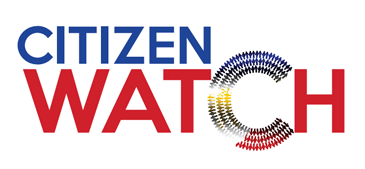Synergy for digital competitiveness
January 25, 2022originally published in The Manila Standard
“The pandemic has exponentially accelerated the shift to a digital powered economy.”
The billions of dollars that the Philippine telecommunications companies have been investing yearly to expand and upgrade telecommunications infrastructure has managed to speed up fixed broadband connection to 50.26Mbps (Megabits per second). This pushed up the country’s global ranking to 63rd out of 178 countries, an improvement of nine places. This was recently reported in the December 2022 Ookla Global Index based on median download speeds that quantified the average user experience.
Download speeds for mobile also increased month-on-month by 2.78 percent to 19.20 Mbps. Compared to July 2016 levels, Philippine fixed broadband had increased by 535.40 percent while mobile download speeds improved by 158.07 percent. The National Telecommunication Commission credited these improving internet connection speeds to the accelerated pace of building and operationalizing of telecommunications towers and fiber optic networks by the private telcos and the shorter permitting timeline imposed by the Department of Information and Communications Technology (DICT).
On the other hand, according to the 2021 Country-Level Digital Competitiveness Ranking by Statista, the Philippines placed 58th or sixth to the last out of a list of 63 countries. First among the top 5 is the United States followed by Hong Kong SAR, Sweden, Denmark, and Singapore.
In the Asia-Pacific ranking of the report, Hong Kong ranks first followed by Singapore, Chinese Taiwan, Republic of Korea, China, Austria, New Zealand, Malaysia, Japan, Thailand, India, Indonesia, then the Philippines at second to the last over Mongolia.
The digital competitiveness rankings “analyze and rank countries’ ability to adopt and explore digital technologies leading to transformation in government practices, business models and society in general” and “based on three major criteria: knowledge, technology, and future readiness.” This report puts into perspective how far we need to go and emphasizes the urgency to catch up with the rest of the world when it comes to digital competitiveness. Quite obvious is how the more developed countries rank higher which shows how digital technologies, and its optimal use is a vital economic asset.
The pandemic has exponentially accelerated the shift to a digital powered economy. According to the 2021 We Are Social report of Hootsuite, out of the Philippine population of approximately 110 million, 73 million or more than 67 percent are internet users. As the telcos build more digital infrastructure, even more demand will be created as Filipinos are quick in adopting digital modes as the main tool for virtually all non-face-to-face communications and transactions.
E-commerce is surging as reported by the 2021 Department of Trade and Industry (DTI) with retail online business increasing to 80.2 percent because of the widespread shift not just in retail transactions but also in delivery services, online entertainment, telehealth consultations, and ride hailing services. DTI predicts that by 2022 there will be one million e-commerce businesses registered aside from millions more in the informal economy doing direct transactions also with online platforms.
This is further reinforced by a 2021 study by global cybersecurity firm Kaspersky that ranked Filipinos as the Asia Pacific Region’s top “e-cash adopters” at 37 percent followed by India (23 percent), Australia (15 percent), Vietnam (14 percent), Indonesia (13 percent), Thailand (13 percent), and Singapore (11 percent).
The main driver of technology and the whole economy, for that matter, is and has always been the private sector because of their innate culture and need to continuously be competitive and profitable by being efficient, fast, and delivering the best products and services to its customers. When successful enterprises are able to provide a new innovation to make life better, consumers reciprocate in a continuing cycle of production and consumption that fuels cross-cutting linkages of thriving ecosystems.
In the October Social Weather Stations survey commissioned by think tank Stratbase, eight in ten Filipinos believe that the Philippines would achieve faster growth if the government engaged in more collaborative partnerships with the private sector. The respondents also valued how the private sector is crucial in helping boost our struggling economy by creating jobs (65 percent), providing more livelihood opportunities (57 percent), and lifting Filipinos out of poverty (46 percent).
A more recent survey of Pulse Asia likewise found that 58 percent of Filipinos believe that the private sector helps create jobs (58 percent), helps fight poverty (57 percent) and gives more livelihood opportunities (52 percent).
Furthermore, 81 percent said the government should engage the private sector to invest in expanding and upgrading the country’s public infrastructure.
The leaders who will be elected in the new government after the May 2022 elections should put top priority in the development of our digital infrastructure to support our growing digital economy. The governments of the top-ranking countries of the digital competitiveness study have been aggressively investing to expand and upgrade their broadband connectivity. We need the government and the private sector to have the synergy to pursue a well aligned digital transformation roadmap to foster our country’s readiness to compete and excel in the global digital economy.
